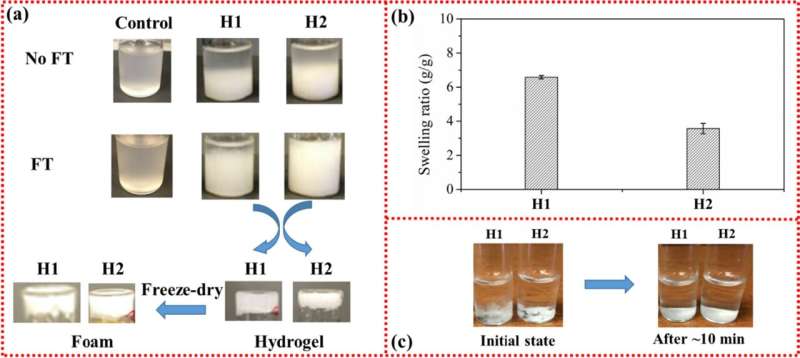This article has been reviewed according to Science X's editorial process and policies. Editors have highlighted the following attributes while ensuring the content's credibility:
fact-checked
trusted source
proofread
Mimicking a bird's sticky spit to create cellulose gels

Using a small bird's nest-making process as a model, researchers from North Carolina State University have developed a nontoxic process for making cellulose gels. The freeze-thaw process is simple, cost-effective, and can create cellulose gels that are useful in a number of applications, including tunable gels for timed drug delivery. The process also works with bamboo and potentially other lignin-containing plant fibers.
The work appears in Advanced Composites and Hybrid Materials. Noureddine Abidi of Texas Tech University is a co-corresponding author of the work.
Cellulose is a wonderful material for making hydrogels—which are used in applications ranging from contact lenses to wound care and drug delivery. But creating hydrogels from cellulose is tricky, and often the processes used to create the hydrogels are themselves toxic.
"Normally, you have to first dissolve the cellulose and then induce it to crosslink or form the structure of interest, which often requires the use of difficult to handle, unstable, or toxic solvents," says Lucian Lucia, professor of forest biomaterials and chemistry at NC State and co-corresponding author of the work.
Enter the swift family of birds—small birds who use their saliva to hold twigs in place when building their nests.
"My then-Ph.D. student Zhen Zhang noted that when birds do this, the saliva acts like a natural resin that holds the nest together and encourages the fibers within the nest to interconnect or crosslink," Lucia says. "Which is exactly what we want the dissolved cellulose to do when making hydrogels. So we asked ourselves, 'What if we mimic the birds?'"
Zhang, currently a postdoc at Texas Tech University, is a co-corresponding author.
The researchers added a water soluble cellulose called carboxymethyl cellulose (CMC) to an acid solution and dissolved the CMC. Then they added powdered cellulose fiber to the solution and subjected it to four rounds of freezing and thawing. The result was cellulose gel.
"Think of it as adding a thickener to water, like you would a pie filling," Lucia says. "By changing the pH of the CMC, the water essentially becomes sticky. Freezing and thawing the solution causes the cellulose to compact and interweave itself into the sticky network, giving you a more organized structure, just as swifts do when they create their nests. Only we don't have to use beaks and saliva to do it."
Freeze drying the gels resulted in cellulose foam. The researchers repeated the process with bamboo fibers as well, which suggests that it could be useful with many other lignin- and cellulose-containing fibers.
"The cellulose gels are robust, stable at room temperature and can be tuned to degrade on a schedule, so would be useful in drug delivery applications, among others," Lucia says. "This opens a promising new window for using biomimicry to process these insoluble cellulosic materials in a greener way."
More information: Zhen Zhang et al, A "bird nest" bioinspired strategy deployed for inducing cellulose gelation without concomitant dissolution, Advanced Composites and Hybrid Materials (2023). DOI: 10.1007/s42114-023-00745-x
Provided by North Carolina State University





















